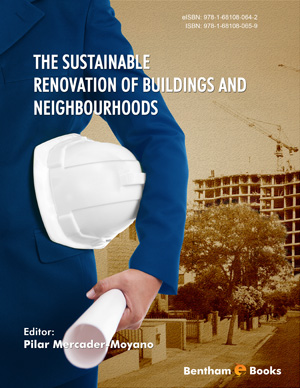Abstract
We are witnessing a profound change towards a new and necessary relationship with the building stock in Spain, which needs to change from a repairing-based culture to a building sustainability management culture, by which active prevention, conservation and maintenance increase the quality of life of the occupants thereof and reduce use and maintenance costs. To achieve the foregoing goals, new reliable tools are required which shall provide values for significant indicators in relation to building sustainability. The main aim of this paper is to define a model to evaluate the environmental impacts associated to the energy retrofit of building envelopes in order to assign them a value by means of recognized sustainability indicators. Indeed, this evaluation model aims to contribute to the development of a tool to support designers, which shall allow them to compare the environmental behavior of different alternatives for the envelope retrofit. The proposed methodology is based on the application of a simplified LCA. The defined evaluation model provides values for the following indicators: CO2 emissions; energy consumption; consumption of potable water; hazardous and non-hazardous waste; and maintenance costs. It makes the designer’s tasks of comparison and selection easier by means of the characterization of building envelope retrofit alternatives which combine different materials which are involved in construction assemblies and solutions. It also provides a comparative scale that allows the deployment of the impacts of each of the life cycle phases of the building which provides for the easy detection of the most critical phase or impact thereof.
Keywords: Building energy retrofit, building envelope, building sustainability management, designer support, durability, existing buildings, evaluation model, Life Cycle Analysis, maintenance costs, refurbishment, sustainability indicators.


















